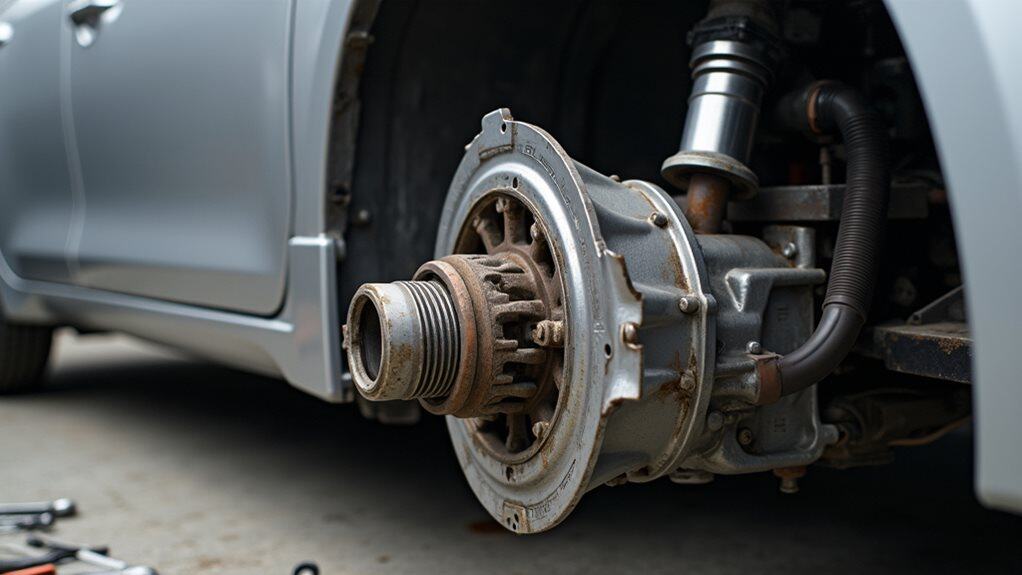You’ll commonly see slipping, jerking, overheating, or stuttering in 2004–2006 automatics and mid‑2010s CVTs, often failing prematurely around 97k–114k miles; start by checking fluid level/condition, scan OBD‑II codes, inspect sensors, wiring, and instrument cluster, and road‑test to reproduce faults. Fixes range from fluid/service and software updates to rebuilds or full replacement, with costs $150–$6,000 (typical CVT fixes near $3,000); more details follow if you want to learn further.
Quick Tips
- Common failures in 2004–2006 automatics cause jerking, slipping, overheating, and often fail around 97k–114k miles.
- Mid-2010s CVTs (notably 2016) can stutter, lose power, or accelerate unpredictably without warning lights.
- Start diagnostics by road-testing, checking fluid level/condition, scanning OBD-II codes, and inspecting for leaks.
- Inspect speed sensors, instrument cluster wiring, and battery voltage as electrical faults can mimic transmission problems.
- Try fluid service and software updates first; consider rebuild or replacement if problems persist or warranty covers failure.
Common Nissan Maxima Transmission Problems by Model Year

Although transmission problems can show up across many years, certain Nissan Maxima model years have recurring, well-documented issues you should know about.
You’ll find 2004–2006 automatics prone to jerking, slipping, overheating, and eventual failure around 97k–114k miles, with rising repair costs.
Mid-2010s CVTs, especially 2016, exhibit stuttering, power loss, and unpredictable acceleration, sometimes without warning lights.
Owners report that repairs often cost around $3,000 to fix.
Regular maintenance and monitoring of battery voltage can help detect related electrical issues early.
Diagnosing, Repair Options, and Cost Estimates
When you suspect a transmission problem in your Nissan Maxima, start with a structured diagnostic approach that narrows down causes quickly and avoids unnecessary repairs; begin by observing symptoms, checking fluid condition and levels, and scanning for fault codes with an OBD-II tool. Be sure to also inspect the instrument cluster and related sensors for any dashboard anomalies, since issues like a faulty speed sensor or wiring can mimic transmission symptoms.
Road-test for delays, slipping, juddering and noises, inspect leaks, then pursue fluid service, software updates, rebuilds or replacement with cost ranges from $150 to over $6,000. Be aware that some owners report premature failure of Nissan CVTs, which can influence repair decisions and warranty coverage.
Wrapping Up
You can avoid costly surprises by spotting transmission issues early, such as slipping, hard shifts, or fluid leaks; check fluid level and color, listen for clunks, and note any warning lights, then get a diagnostic scan to read fault codes. For many problems, a fluid and filter service or software update fixes the issue, while worn clutches or solenoids need repair or replacement. Compare repair vs. rebuild costs, seek a trusted shop, and keep regular maintenance.

